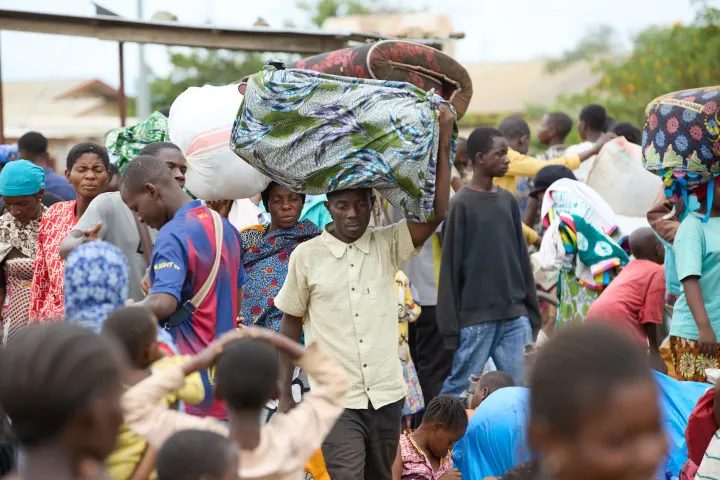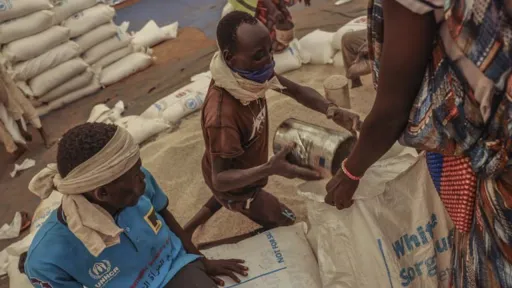By Paula Odek
First detected in 1967 in the German city of the same name, MVD has a fatality rate of up to 88 percent.
The highly virulent Marburg Virus Disease (MVD), a deadly hemorrhagic fever with no known vaccine or treatment, has put the world on a health alert, and scientists were racing to find an immunisation.
On Thursday, the World Health Organization (WHO) confirmed eight new cases of the virus in Equatorial Guinea, bringing the total number of laboratory-confirmed cases to nine since the outbreak was declared in February.
The new cases were confirmed following laboratory analysis of additional samples in “Kie Ntem in the east, Litoral in the country’s west, and Centro Sur province, bordering Cameroon and Gabon,” WHO said in a statement.
The areas reporting cases are about 150 km (93 miles) apart, suggesting wider transmission of the virus, it said.
At least 20 probable cases have been reported and 20 deaths.
Matshidiso Moeti, WHO regional director for Africa, said the confirmation of the new cases was a critical signal to scale up response efforts to urgently stop the chain of transmission and avert a potential large-scale outbreak and deaths.
The latest announcement in Equatorial Guinea came days after Tanzania’s Health Ministry declared on March 20 the first outbreak of the deadly disease in the country's northwestern Kagera region, which has claimed five lives, with three others admitted.
What is Marburg Virus
Marburg, a highly contagious and deadly filovirus, is related to its more well-known cousin Ebola. These are part of a broader group of viruses that can cause viral haemorrhagic fever, a syndrome of fever and bleeding.
The Marburg virus took its name from the German city, where it was first identified in 1967 following the import of African green monkeys from Uganda, which were later handled by lab workers in Germany and Yugoslavia.
Since then, outbreaks have happened in a few African nations, but less often than with Ebola. The biggest was in Angola in 2005, with 374 cases and 329 deaths.
However, recently the countries that have reported the Marburg virus include Ghana, Guinea, Uganda, Kenya, Angola, the Democratic Republic of Congo, Russia, Zimbabwe, South Africa, Yugoslavia and Germany, raising concerns about the potential of the virus becoming a much larger epidemic, and spreading globally like Covid-19.
Transmission and symptoms
The virus spreads between people through direct contact, especially with bodily fluids, such as blood, vomit, and faeces. It can also be transmitted through contact with infected animals, like bats and monkeys.
According to WHO, the Marburg virus can cause severe hemorrhagic fever, leading to organ failure and death.
The mortality rate of the virus is estimated to be between 24 percent and 88 percent, depending on the outbreak.
While the clinical diagnosis of MVD is difficult, the Marburg virus and Ebola virus are members of the same family, known as Filoviridae, and have similar symptoms and transmission modes.
The symptoms of the Marburg virus can be spotted within 2-21 days after contracting the virus.
Symptoms of the virus appear in an affected person with the sudden onset of high fever. This is accompanied by headaches, vomiting blood, joint and muscle pains and unexplained bleeding through the body openings, including the eyes, nose, gums, ears, anus and the skin.
How worried should we be?
The outbreak of the Marburg virus in Guinea has raised concerns due to the country's proximity to other countries that have experienced outbreaks of Ebola in the past, including Sierra Leone and Liberia.
The concern is that Marburg might spread like Ebola in 2014, grow into a far larger outbreak, and become global. It could spread to many other nations as a result of travel. 2014 saw the expansion of Ebola cases from Guinea to Liberia and Sierra Leone.
The bulk of instances happened in these three nations, however cases connected to travel also happened in seven other nations, including the US and the UK.
Despite different research on animals, there is no specific treatment or vaccine for Marburg virus disease. In addition, experimental treatments have never been tried in humans.
According to CDC Africa, the existing infection prevention and control protocols for Ebola and other viral haemorrhagic fevers can be used to prevent transmission of MVD.
WHO said it is working with the national authorities to step up emergency response measures – including enhancing disease surveillance, testing, clinical care, infection prevention and control, as well as carrying out further epidemiological investigations.
Stressing the need to raise public awareness to help curb infection spread, WHO said additional experts in epidemiology and infection prevention and control would be deployed in the coming days.
The Africa Centers for Disease Control and Prevention (Africa CDC) said it would send an expert team to Tanzania to help with response measures.
























